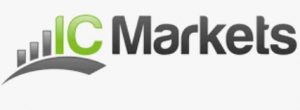TOC:
Forex trading, or foreign exchange trading, involves the exchange of one currency for another with the objective of profiting from fluctuations in exchange rates. It is the largest and most liquid financial market in the world, operating continuously from Monday to Friday across global financial centres. Unlike equity markets, the forex market is decentralised, with trading taking place over-the-counter between institutions, corporations, governments, and individual participants through electronic platforms and communication networks.
While initially dominated by central banks and commercial institutions, the forex market has opened to retail investors through online brokerage platforms. These brokers offer leveraged access to currency pairs, often through contracts that mirror the spot market. The entry process is straightforward, but successful trading demands a disciplined approach, understanding of market mechanics, and a clear risk framework.

Currency Pairs and Market Pricing
All forex transactions involve the simultaneous buying of one currency and selling of another, quoted as a pair. The first currency in the pair is the base; the second is the quote. A price of 1.1500 in EUR/USD, for example, means one euro is worth 1.15 US dollars. Movements in price reflect changes in the relative value of the two currencies, driven by interest rate expectations, macroeconomic data, central bank policy, and market sentiment.
Currency pairs are categorised as major, minor, or exotic. Major pairs include the most widely traded currencies, typically involving the US dollar. Minor pairs exclude the dollar but include stable, developed market currencies. Exotic pairs involve currencies from emerging or less liquid economies and usually carry wider spreads and higher volatility.
Market pricing is continuous, with bid and ask prices representing the levels at which buyers and sellers are willing to transact. The difference between these prices, the spread, reflects liquidity and broker structure. Most retail brokers either quote fixed or variable spreads, depending on whether they operate on a dealing desk or through external liquidity providers.
Leverage and Margin
One of the defining characteristics of forex trading is leverage. Brokers allow traders to control a position size greater than their account balance by placing only a fraction of the total value as collateral, known as margin. A leverage ratio of 30:1 means that €1,000 of margin supports a €30,000 position. This magnifies both profits and losses.
Regulators in many jurisdictions have imposed limits on retail leverage to prevent excessive exposure and account blowouts. These caps vary by region but typically range from 20:1 to 50:1 for major currency pairs. Leverage should be understood not as an advantage but as a tool that increases risk. Traders must monitor their margin levels closely, especially during volatile periods, as margin calls or stop-outs can occur rapidly.
Trading Platforms and Order Execution
Retail forex trading is typically conducted through platforms such as MetaTrader 4 (MT4), MetaTrader 5 (MT5), or cTrader. These platforms provide live quotes, interactive charting, technical indicators, and order execution functionality. Traders can place market orders, pending orders, and set automated trading strategies using built-in scripting tools.
Execution quality depends on broker structure. Market maker brokers may fill trades internally and quote their own prices, while STP or ECN brokers pass orders to external liquidity pools. The method affects spreads, execution speed, and the potential for slippage during fast-moving markets. While execution is generally reliable under normal conditions, pricing gaps can occur during economic releases or low liquidity sessions.
Strategy and Market Analysis
Forex traders use a variety of analytical approaches to guide their decisions. Technical analysis involves the study of historical price movements and chart patterns, supported by indicators such as moving averages, oscillators, and Fibonacci levels. This approach assumes that market behaviour reflects all known information and that patterns repeat over time.
Fundamental analysis, by contrast, focuses on macroeconomic variables, including interest rates, employment data, inflation figures, and central bank commentary. Traders using this method aim to anticipate longer-term currency movements based on economic trends and policy direction.
Sentiment analysis and intermarket analysis are also used to assess broader market positioning and risk appetite. Successful trading often involves combining multiple approaches and adapting strategy to prevailing market conditions.
Risk Management and Capital Preservation
Risk management is central to any forex trading activity. Because leverage can quickly amplify losses, traders must define their risk parameters before entering a trade. This includes setting stop-loss levels, limiting the size of each position relative to account balance, and avoiding overexposure to correlated currency pairs.
Professional traders often risk a fixed percentage of capital per trade—commonly between one and two percent. This ensures that a series of losing trades does not erode the account beyond recovery. Risk management also includes preparing for low-probability, high-impact events such as central bank interventions or geopolitical crises, which can cause extreme volatility.
Discipline is a critical part of risk control. Emotional trading, revenge trading after losses, or deviating from a tested strategy are common pitfalls that contribute to account failure. A consistent process, combined with realistic expectations, is more important than the outcome of any individual trade.
Regulation and Broker Selection
Regulated brokers operate under oversight from financial authorities such as the UK’s Financial Conduct Authority (FCA), the Cyprus Securities and Exchange Commission (CySEC), or the Australian Securities and Investments Commission (ASIC). These regulators impose rules on client fund segregation, leverage, disclosure, and dispute resolution. Traders are advised to work with regulated brokers to reduce counterparty risk.
Broker selection should also take into account execution model, platform availability, fee structure, and customer support. Transparency around spreads, slippage policy, and funding methods is a sign of a reliable broker. Unregulated brokers may offer more aggressive terms, such as higher leverage or bonuses, but often lack client protection mechanisms.
Taxation and Reporting
Profits from forex trading are usually taxable, depending on jurisdiction and account structure. In some countries, trading gains are treated as capital gains; in others, they are considered income. Record-keeping is the trader’s responsibility and should include trade logs, account statements, and funding records. Professional tax advice is recommended for those with significant trading activity or accounts held offshore.
Failure to report trading income can result in penalties. Some brokers provide tax reports, but these may not align with the local fiscal year or reporting standards. Traders should reconcile statements in their domestic currency and retain supporting documents.
This article was last updated on: May 26, 2025
CFD Broker Reviews
-
CFD Guides
- How to Build a Long-Term CFD Trading Plan
- The Future of CFD Trading: Trends and Innovations
- The Psychology of CFD Trading: How to Control Emotions
- Regulations and Legal Aspects of CFD Trading in Different Countries
- How to Test a CFD Trading Strategy with a Demo Account
- CFD Scalping Strategies: Pros and Cons
- The Effect of Economic News and Events on CFD Markets
- The Role of Fundamental Analysis in CFD Trading
- Understanding Short Selling in CFD Trading
- How to Read and Analyze CFD Charts
- Swing Trading vs. Day Trading with CFDs
- Best CFD Trading Strategies for Beginners
- How to Trade CFDs on Cryptocurrencies
- The Impact of Market Volatility on CFD Trading
- Understanding Overnight Financing and Holding Costs in CFDs
Forex Guides





Deposit money to your broker
Archives

